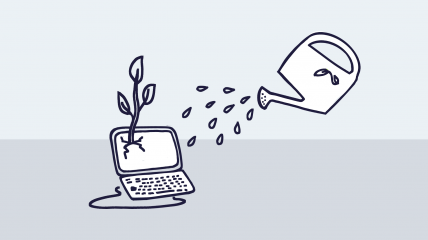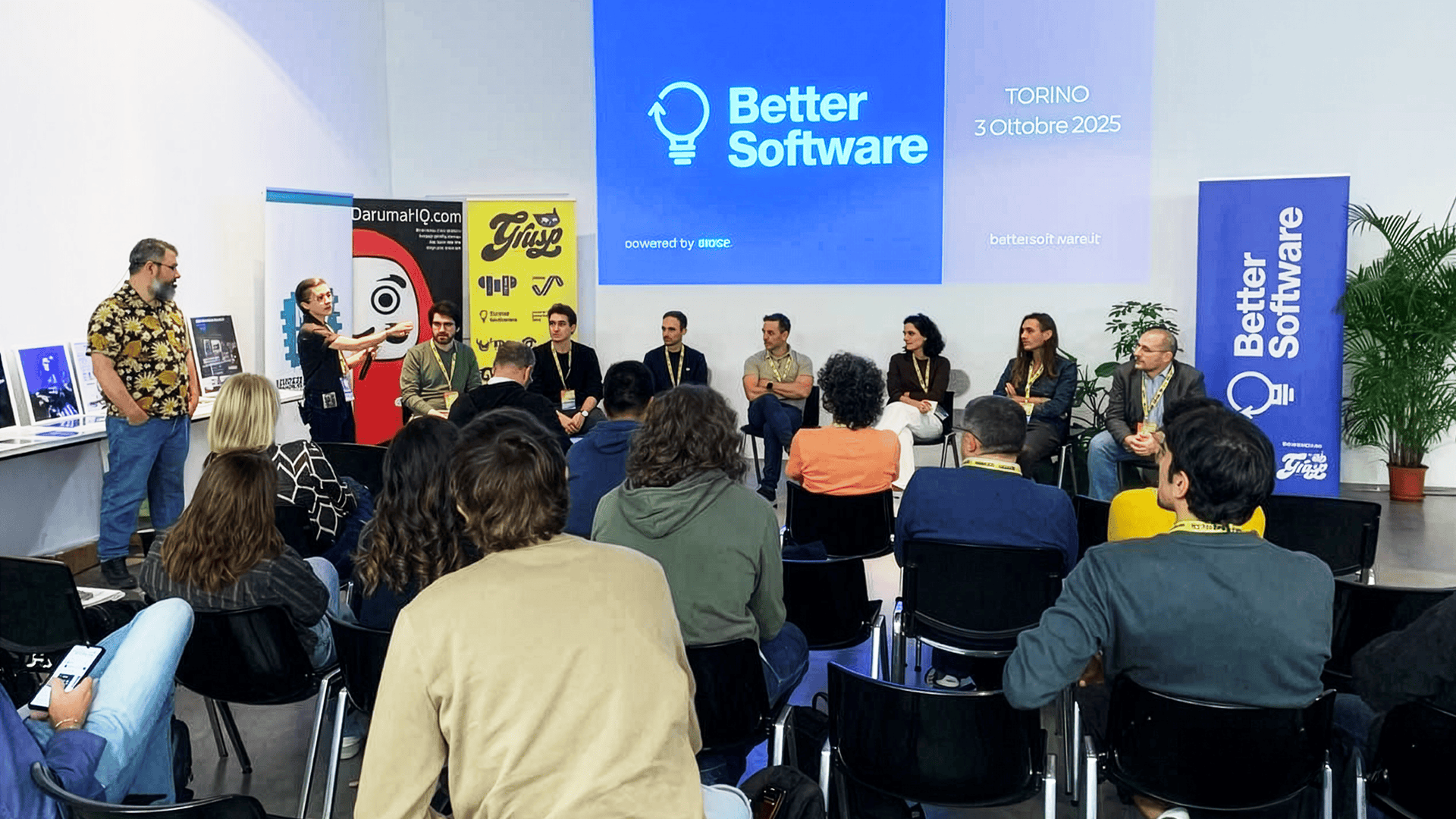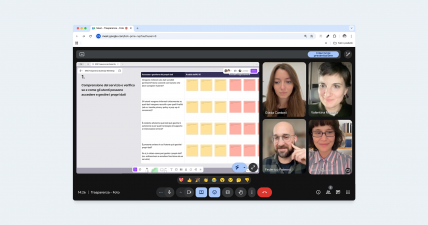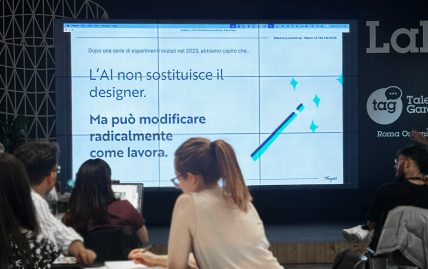Thinking
A website must be cultivated like a plant
A website is a living ecosystem that grows when you take care of it and fades when you neglect it. In this article we talk about vital signs, pruning, and mindful maintenance - aspects that designers should consider from the very beginning of a project.

When we think of a website, we imagine a world made of interfaces and technology. In the common imagination, it is something very different from a natural ecosystem that grows and changes over time. Yet websites and plants have more in common than it seems. They both live, communicate, and transform. And, above all, they both need time, care, and attention to thrive.
This is what we explored together with Nicola Bonotto from Piano D during “Better Software”, the event held in Turin on October 3rd.
Two different worlds? Not really
At first glance plants and websites seem to belong to opposite worlds. One made of sap, light, and roots, the other of code, data, and servers. But if we look a little closer, we discover surprising similarities between a natural ecosystem and a digital one.
Plants sprout, grow, mature, and sometimes die. In the same way, a website is born from a project, develops, evolves, and if neglected can become obsolete.
Their way of communicating also has something in common. Plants use chemical or electrical signals, while websites speak through logs, navigation data, and user feedback that reveal their state of health.
And then there is the matter of care. A neglected plant dries out, a website that is not updated becomes slow, vulnerable, and difficult to use. In both cases the lack of attention leads to a slow but inevitable decline.
Withered websites: what they are and why they matter
A withered website is characterised by outdated content, obsolete functionalities, and an antiquated interface. The result is a frustrating user experience in which navigation becomes harder, it takes more time to sort through old and new information, and trust in the website drops.
There is also an accessibility issue. As standards and technologies evolve, an outdated website risks excluding some people. Beyond the direct impact on users, this can turn into reputational risks and, in some cases, legal ones.
Finally, sustainability. Keeping an old and poorly optimised website online has an economic and environmental cost that is often unjustified. A healthy website is also a sustainable one.
Why websites wither
The main causes are linked to a lack of ongoing care, just like with plants. In particular:
- Too much content. Without regular review it accumulates and becomes redundant. The result is a website that is hard to manage and hard to navigate.
- Outdated design. Visual trends and standards change rapidly. An interface that is not updated may feel stuck and poorly maintained.
- Obsolete functionalities. Components that are not updated may stop working or create accessibility issues, generating unnecessary maintenance costs.

How to keep a website thriving
A website, like a plant, needs constant attention. Here are some good practices:
- Listen to the signals. Analytics and feedback tell us a lot about user behaviour.
- Declutter. It takes courage to prune and remove what is no longer useful.
- Consistent care. Updating text, images, and functionalities over time is like watering and feeding a plant.
Maintenance is therefore part of the design process. When we think of a website as a living organism, the role of the designer is not only to help it come to life but to make it maintainable.
This means designing clear content structures, accessible and modular components, controlled taxonomies, and realistic review routines. It also means training the people who will look after the website so that its health does not depend on extraordinary interventions but on small everyday actions.
And if it is already too late?
No need to panic. Even a withered website can come back to life. You just need to start from the roots: understand what is truly useful, what needs to be removed, and what can be redesigned.
This is what we did with several Local Health Authorities in Italy, dealing with thousands of legacy contents accumulated over time. By redesigning structure and content governance, and by placing users at the centre, we helped these organisations turn chaotic sites into healthy and sustainable digital ecosystems.
The first step was pruning: mapping thousands of pages, removing the unnecessary, and rebuilding the site structure according to a clearer and more sustainable logic. From there, the natural evolution led to accessible templates and components, guided population of the new CMS, training for internal teams, and a governance model that finally became manageable.
Caring for a website is not a one-off action. It is a continuous process made of attention, listening, and awareness.
Like a plant, a website needs to be observed, nurtured, and pruned to keep growing over time.
The secret is simple: cultivate, not just plant.


